


| Chris Reilly – | Sculpture and Prints |
 | ||||
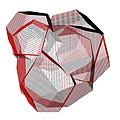 |
 |
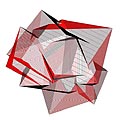 |
 |
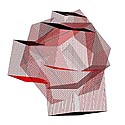 |
Inkjet Print 24x24 2007 |
 |
Inkjet Print 24x24 2007 |
 |
Inkjet Print 24x24 2007 |
 | ||||
 | ||||
 | ||||
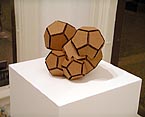 |
 |
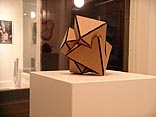 |
 |
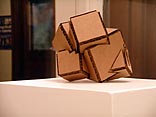 |
Corrugated Cardboard 6x6x7 2007 |
 |
Corrugated Cardboard 6x6x7 2007 |
 |
Corrugated Cardboard 6x6x7 2007 |
 | ||||
 | ||||
 | ||||
 | ||||
|
Artist Statement Fool's Gold/Polyamory "[He] had one single goal--to become empty, to become empty of thirst, desire, dreams, pleasure and sorrow...to experience pure thought--that was his goal. When all the Self was conquered and dead, when all passions and desires were silent, then the last must awaken...the great secret!
...He looked around him as if seeing the world for the first time...Meaning and reality were not hidden somewhere behind things, they were in them, in all of them. How deaf and stupid I have been, he thought...When anyone reads anything which he wishes to study, he does not despise the letters and punctuation marks, and call them illusion, chance and worthless shells, but he reads them, he studies and loves them, letter by letter. But I, who wished to read the book of nature, did presume to despise the letters and signs. I called the world of appearances illusion. I called my eyes and tongue, chance."
Hermann Hesse Often mistaken in the past for the real thing by inexperienced prospectors, the mineral pyrite — also known as Fool's Gold — has isometric crystals that usually appear as cubes with a golden, mirror-like surface. Pyrite also frequently occurs as octahedral crystals and as pyritohedra (a dodecahedron with pentagonal faces). Often the crystals form in combination with one another, or in shapes that combine aspects of two crystalline forms. The 3D models these prints and sculptures originate from are based on the 'perfect' crystalline forms of pyrite — singular, regular polyhedra, they lack the irregularities in shape and departures from form characteristic of the real crystals. Mathematically and symmetrically, their forms are more 'pure' than their natural counterparts. These aspects of order, logic, and predictability are inherent even in the techniques of 3D modeling, scripting, and digital output used to produce these objects. This is not meant to convey on my part any lack of appreciation for the natural forms of pyrite crystals (or for nature or real things in general). In fact, I find real pyrite crystals quite beautiful. And though the objects I've produced — while possessed of their own desirable formal qualities — are cleaner and more precise in a mathematical sense, they are, at the same time, literally flat and hollow. They lack the golden sheen, the natural striations, the fascinating blends of crystalline shapes that the real things possess. Instead of staking my claim on one side or the other, the real vs. the abstract, deeds vs. thoughts, mind vs. body, art vs. nature etc., I am content to sit on the fence and appreciate both for what they are. Perhaps I am weak-willed, indecisive, and ambivalent. More likely, in my opinion, perfect abstractions have a place and an application within the physical world, just as nature, for all its 'flaws', supports these abstractions with the very physical framework it provides. |
||||
 | ||||
 | ||||
 | ||||
 | ||||
| Exhibition Catalog | ||||
 | ||||


